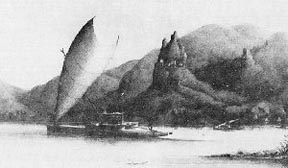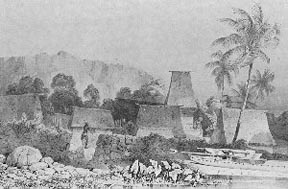An ancient land filled with waterfalls, remote tropical islets, forested big islands, rare tropical plants and birds, Fiji is an exotically wonderful vacation destination. Originally a land of cannibals, Fiji is now known as a former British colony and ex-pat hangout, with an atmosphere of slow colonial decay pervading the islands and its infrastructure. Tempered by the exhilarating rush of tourist dollars, this malaise gives way to hustle and bustle in Suva and Nadi, the big towns of Fiji. Otherwise, you are on remote tropical islands in the midst of the South Pacific. But how did we get here?
Fijian Warriors
According to Dr Roger Green, Professor of Anthropology at Auckland University, in New Zealand, the first settlers arrived some 2,000 years before Christ was born. Comprised of two distinct peoples, one Melanesian, the other Polynesian, these early settlers spent millennia battling each other for control of the islands.
Eventually the lighter-skinned Lapita Polynesians gained supremacy with their sea-faring canoes and pottery-making skills. These folks traded with others as far away as Vanuatu and the Solomon Islands.

Fijian Canoes
In the year 1643 a Dutchman named Abel Tasman “discovered” the islands on his way to New Zealand. But this guy spent his entire career getting “lost.” Captain James Cook sailed through in 1774 surveying the area. But Captain William Bligh made the Fiji Islands famous when he found refuge here after the famous “Mutiny on the Bounty” occurred at sea nearby. But the first actual European settlers were shipwrecked sailors and escaped convicts from Australia and New Zealand who setup lives for themselves here.

Fijian Housing, known as a Bure.
In the 19th Century missionaries arrived in droves, with tribal warfare and cannibalism disappearing in favor of Christianity. At that time the first massive deforestation of Fiji’s biggest island, Viti Levu, began with the sandalwood forests being decimated. Later teak and other exotic woods were stripped from the ancient forest and logging continues until the present day.
During the late 1800’s and into the early 1900s many thousands of Indians arrived with their Hindu and Muslim culture, and today comprise 44 percent of the population. There is major tension between the Asians and the Fijians, and this has led to several coups in recent times.
The United Kingdom held control of Fiji from 1874 until 1970, and actually did make some improvements to the infrastructure and educational systems, resulting in a more stable population. However this harmony is a thin veneer, and when visiting most locals kept saying that if they can just make it through another year without a coup, then Fiji will be fabulous. Meanwhile tourism development schemes are the major source of income for Fiji, apart from Rum and Sugar Cane production.
~Martin Trip

